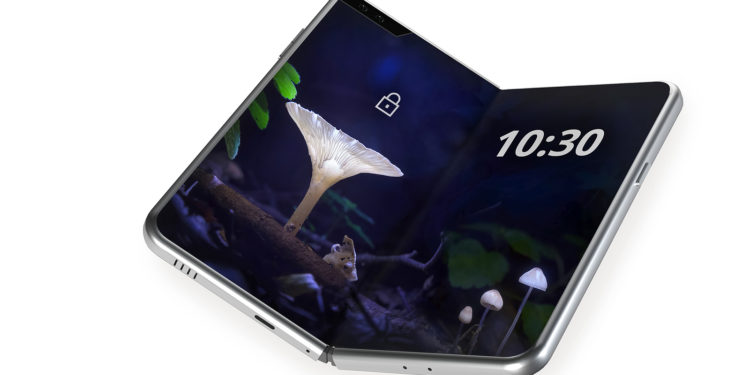While researching displays that can be folded or bent, Apple is now also working on technology that will allow the iPhone display itself to “heal” the inevitable signs of wear and tear.
Apple has been working on a foldable iPhone for at least five years and is also investigating models with rollable screens. In any case, the goal is to make sure these screens work—and aren't damaged by folding or rolling. A newly granted patent now proposes a way to minimize damage and prevent it when it occurs. The patent, "Electronic Devices With Flexible Display Cover Layers," proposes mixing rigid and flexible areas for a display and utilizing what Apple calls "self-healing." This self-healing aspect is perhaps the most interesting part of the patent.
Apple patent addresses foldable displays
Unfortunately, in the more than 11,000 words of the patent, there are 147 references to it, but very few details about what the self-healing is supposed to do and very little about how exactly it is supposed to work. The description states:
An electronic device may have a hinge that allows the device to be bent about a bending axis. A display may extend over the bending axis. To allow bending about the bending axis without damage, the display may have a cover layer with a flexible portion.
Apple suggests that the display could extend across the entire device but consist of three elements. Two of these would be regular, fixed screens while the third would be a flexible part that connects them together. The patent goes on to say:
Apple is working on self-healing displays
During operation of an electronic device, the display cover layer of the electronic device may become scratched or dented. To improve the aesthetics of the electronic device, it may be desirable to minimize the presence of scratches and dents. To reduce the number of dents, scratches, or other imperfections in a display cover layer, the display cover layer may include a layer of self-healing material.
Apple suggests that this flexible layer itself may contain "a layer of elastomer," and that is the self-healing element. Elastomer is stretchy, but it can also return to its original shape - an analogy would be the memory foam in certain mattresses. Typically, this ability to return to the previous shape is triggered by heat, such as the body heat of a person sleeping on the mattress.
Self-healing can occur in the layer of self-healing material without prompting (e.g. if the self-healing coating is dented, the coating material can fill the dent without external intervention). Alternatively, self-healing can also be triggered or accelerated by externally applied heat, light, electric current or another type of external stimulus.
Apple suggests that “the display cover layer… contains transparent conductors that form a heating layer” to start the healing process.
iPhone Fold: Apple's display ideas are more innovative
The heating layer can be used to generate heat in response to user input, on a preset schedule, or when charging the electronic device.
The patent tries to cover all possible situations. For example, it makes sure that this technology can be used in all kinds of devices, from "computer devices such as laptops" to phones to "smaller devices such as watches, pendants, wearables, or miniature devices of other kinds." It also says that the display in this configuration could consist of two rigid elements with a flexible one in between. But it could also be a single display. However, all descriptions assume that the display would consist of multiple layers.
It may have an outer layer of clear glass, transparent plastic, sapphire, or other transparent materials that serves as a protective layer for thin-film transistor circuits and other display structures. The outer display layer is sometimes called the display cover layer.
Some layers serve as the actual display while others are designed to protect the screen - especially when it is bent. "[A] device can be bent 180 degrees or another suitable amount about the bend axis," Apple continues, "so that the display is visible from the outside when folded." This patent is attributed to eight inventors. They include Hoon Sik Kim and Paul S. Drzaic, both of whom have already received a related patent covering how a folded iPhone can display notifications when closed. (Photo by bbsferrari / Bigstockphoto)





